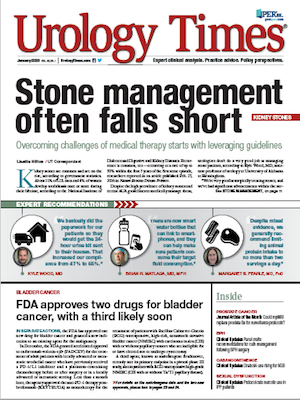Publication
Article
Urology Times Journal
Self-employed? Here’s how you can save for retirement
Author(s):
"If you are self-employed, a solo 401(k) is an excellent option for saving for retirement," writes Jeff Witz, CFP.
Philip Steury - stock.adobe.com


I’m a physician who works as an independent contractor, meaning I don’t have access to employer-provided retirement plans. What are my options for saving for my retirement?
The retirement plan options available to self-employed physicians and other small business owners have historically been very limited. As a result of some welcome changes, the menu of available retirement plans has increased, giving physicians greater flexibility.
Solo 401(k) plans. If you are self-employed, a solo 401(k) is an excellent option for saving for retirement. As the business owner, you are entitled to contribute both as an employee and the employer. Employee contributions may be made on a pre-tax or Roth basis, providing access to different tax-advantaged options. A self-employed physician, as their own employee, may defer 100% of their compensation up to $19,000 for the 2019 tax year ($25,000 for employees age 50 or older) and $19,500 for the 2020 tax year ($25,500 for employees age 50 or older). Additionally, if your spouse is an employee of the business, he or she can contribute to the plan as well.
Also by Jeff Witz, CFP - Inherited retirement accounts: What are your options?
As the employer of your own business, you may make an additional employer contribution up to 25% of compensation. However, combined employee and employer contributions cannot exceed $56,000 for the 2019 tax year and $57,000 for the 2020 tax year. Employer contributions are generally deductible as a business expense. The solo 401(k) is subject to reporting requirements once the total account balance exceeds $250,000.
Simplified Employee Pension (SEP) IRA. Another option for someone who is self-employed is a SEP. If you are self-employed with no employees, a SEP allows employer contributions equal to 20% of your net income up to a maximum of $56,000 in 2019 and $57,000 in 2020. There is no option to also contribute as an employee. However, this more “simplified” plan is generally exempt from the reporting requirements of other qualified retirement plans like a solo 401(k) and may be easier to manage.
Net income, which determines how much can be contributed into the SEP, is defined as the net profit from IRS Schedule C reduced by the deductible self-employment tax. Contributions to the SEP are deductible as a business expense. If you have employees, the rules for SEPs become much more complicated, and we recommend you speak with a financial professional to determine if a SEP is still an appropriate option for you.
Savings Incentive Match Plan for Employees (SIMPLE) IRA. A SIMPLE is only available to employers with 100 or fewer employees. Like SEPs, SIMPLEs are exempt from most reporting rules. SIMPLEs are generally most appropriate for someone who is self-employed but does have a small number of employees.
As the employer, you have two options when contributing to the plan. Option one is to make a dollar-for-dollar match of employee contributions up to 3% (this can be reduced to 1% in any 2 out of 5 years). Option two is to contribute a safe-harbor 2% of the employee’s compensation. Employee compensation is subject to the IRS compensation limit of $280,000 in 2019 and $285,000 in 2020. These employer contributions are required every year and they are deductible. Employees in the plan may contribute up to $13,000 in 2019 ($16,000 if over age 50) and $13,500 in 2020 ($16,500 if over age 50).
Next:"An additional option includes a Keogh Plan"An additional option includes a Keogh Plan, which combines a defined contribution plan and a defined benefit pension plan. However, due to some tax law changes, these have largely been replaced by SEP IRAs.
Read: How term life insurance can help ensure financial goals are met
Overall, there are retirement options available for self-employed physicians. However, the nuances between the options can be complicated. We recommend you speak with your financial adviser to determine which plan is best for you.
What are the deadlines for employee and employer contributions into solo 401(k)s, SEP IRAs, and SIMPLE IRAs?
The deadline for both employer and employee solo 401(k) contributions is the standard tax filing deadline in April. This can be extended 6 months if an extension is filed. If the business is structured as an S corporation or LLC, then the deadline is in March. This same deadline applies to SEP IRAs. SIMPLE IRAs require that all employee contributions be made by Dec. 31 of each year. (The employer has 30 days to credit the account with the salary deferral). Matches and non-elective contributions must be made by the business’ tax filing deadline including extensions.
The information in this column is designed to be authoritative. The publisher is not engaged in rendering legal, investment, or tax advice.
































